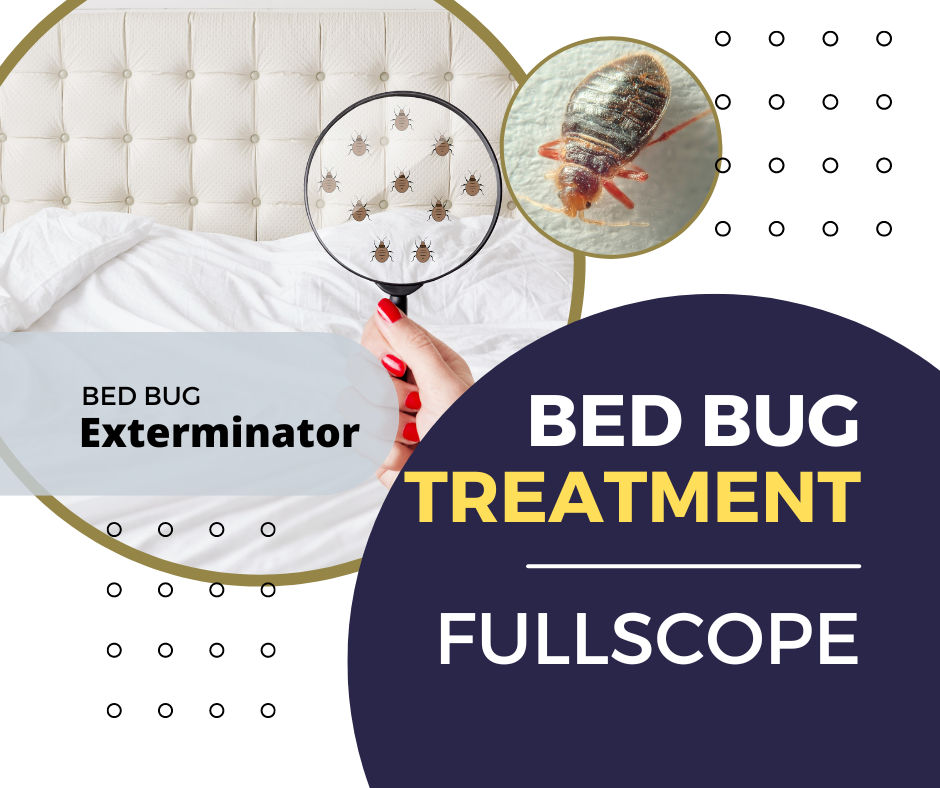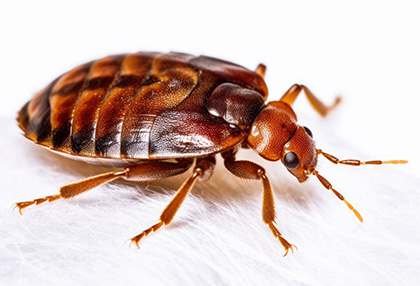Affordable Bed Bug Heat Treatment for Quick and Effective Results
Affordable Bed Bug Heat Treatment for Quick and Effective Results
Blog Article
Obtain Informed Regarding the Kinds Of Pest Control Approaches and Their Benefits for Property Owners
Understanding the numerous pest control approaches offered to home owners is vital for effective pest monitoring. House owners who are knowledgeable can make tactical choices that not only address parasite problems but also improve the general high quality of their living atmosphere.
Chemical Pest Control Methods
Chemical insect control approaches are an essential element of integrated parasite monitoring methods for house owners seeking reliable options to pest invasions. These techniques involve the application of chemical substances created to get rid of or deter pests that endanger personal building, wellness, and convenience. Usual chemicals used consist of insecticides, rodenticides, fungicides, and herbicides, each customized to target particular pests.
The key benefit of chemical bug control is its rapid effectiveness; several formulations give prompt outcomes, decreasing pest populaces dramatically quickly. Additionally, advances in chemical formulations have brought about products that are much more ecologically friendly and have reduced toxicity levels for non-target organisms when used appropriately.

Biological Insect Control Strategies
Natural parasite control methods have actually gained prominence as house owners seek much safer and a lot more lasting alternatives to standard chemical strategies. Organic insect control techniques use all-natural killers, parasites, or virus to take care of parasite populaces effectively. This technique is not just eco-friendly yet additionally reduces the threat of harm to non-target types, consisting of useful bugs and wild animals.
Among the most common organic control methods entails presenting natural killers right into the atmosphere. Ladybugs can be utilized to regulate aphid populaces, while nematodes target soil-dwelling bugs like grubs. Additionally, parasitoids-- organisms that live on or within a host-- can be used to control particular insect varieties by laying eggs inside them, ultimately resulting in their death.
An additional technique is making use of biopesticides, which are stemmed from natural materials such as germs, plants, or minerals (bed bug exterminator). These products can efficiently target insects while posturing very little risk to humans and pets. Overall, organic insect control strategies give homeowners with an efficient methods of insect management that lines up with environmental principles, promoting a much healthier living setting while lowering reliance on artificial chemicals
Mechanical Bug Control Approaches
Mechanical bug control approaches include a variety of techniques that literally protect against or get rid of insects without making use of chemicals. These techniques are specifically useful for homeowners looking for environmentally friendly options while guaranteeing the safety of their living areas.
One common method is using obstacles, such as traps, internet, and displays, which protect against bugs from getting in homes or certain areas. For example, setting up window screens can effectively maintain pests out, while utilizing physical barriers around gardens can hinder larger insects like deer or bunnies. In addition, mechanical traps developed for rats can catch and remove these pests without the demand for poisonous materials.
An additional effective technique involves using vacuum cleaners and brooms to eliminate pests straight from surface areas. Normal cleansing and upkeep can dramatically lower pest populations by removing food resources and concealing areas. Employing devices like ultrasonic insect repellents can prevent various bugs with noise waves that are unpleasant to them yet inaudible to humans.
Social Bug Control Practices
Social bug control techniques concentrate on changing the atmosphere and administration techniques to develop problems that are much less for pest infestations. These techniques are essential in keeping a well balanced ecological community and decreasing the reliance on chemical treatments. By altering farming practices, homeowners can effectively discourage bugs while promoting plant health and wellness.
One typical technique consists of plant turning, which interrupts the life process of bugs by transforming the kinds of plants grown in a particular area (bed bug exterminator). This not just reduces pest populaces however likewise boosts soil wellness. Additionally, intercropping-- planting varied crops in distance-- can perplex pests and reduce their ability to situate their preferred host plants
Water administration is one more crucial aspect of cultural practices. Proper watering methods can stop standing water, which acts as a breeding place for insects and other bugs. Moreover, maintaining cleanliness in and around the home, such as regularly removing debris and food waste, can dramatically decrease insect attraction.
Including these social practices into an extensive insect administration approach permits house flying ants owners to create a setting that naturally hinders pests, therefore improving the performance of various other control approaches while promoting sustainable horticulture and landscaping.

Integrated Pest Administration Approaches
Integrated Parasite Administration (IPM) represents an all natural technique that integrates various methods to effectively take care of pest populaces while minimizing environmental influence. This approach incorporates organic, social, physical, and chemical practices to accomplish sustainable parasite control. By assessing pest populations and their all-natural adversaries, IPM emphasizes tracking and identifying pests before executing control actions.
One of the core concepts of IPM is the use of limits, which establish the degree of pest task that warrants treatment. This ensures that therapies are used only when required, reducing the dependence on chemical pesticides. Organic control techniques, such as introducing natural predators or parasites, work in combination with cultural techniques like plant turning and habitat adjustment to disrupt pest life process.
In addition, IPM urges the use of least-toxic chemical alternatives when intervention is required, prioritizing items that present marginal danger to non-target microorganisms and the atmosphere. For house owners, embracing IPM comes close to not just boosts the effectiveness of insect administration yet likewise advertises a much how to kill bed bugs healthier living atmosphere, fostering biodiversity and minimizing chemical exposure. Inevitably, IPM equips property owners to make educated decisions that balance pest control with ecological duty.
Conclusion
In final thought, recognizing the numerous bug control approaches encourages homeowners to make informed choices regarding pest monitoring. Each strategy-- chemical, organic, mechanical, social, and integrated insect monitoring-- offers distinctive advantages that provide to different needs and choices.
Comprehending the different bug control approaches available to property owners is vital for reliable insect monitoring.Chemical insect control methods are a vital part of integrated pest monitoring methods for house owners seeking effective options to pest problems. Overall, organic bug control strategies offer home owners with an effective ways of pest administration that aligns with ecological principles, promoting a much healthier living environment while reducing reliance on synthetic chemicals.
Cultural pest control methods focus on changing the environment and pest removal monitoring methods to produce conditions that are less conducive to pest invasions.In conclusion, understanding the numerous pest control techniques empowers property owners to make educated decisions concerning pest administration.
Report this page